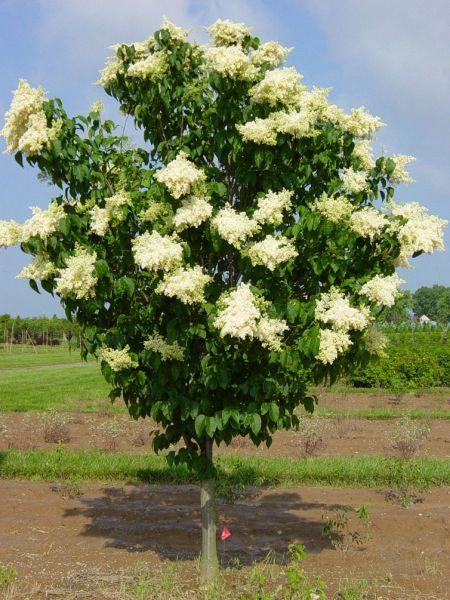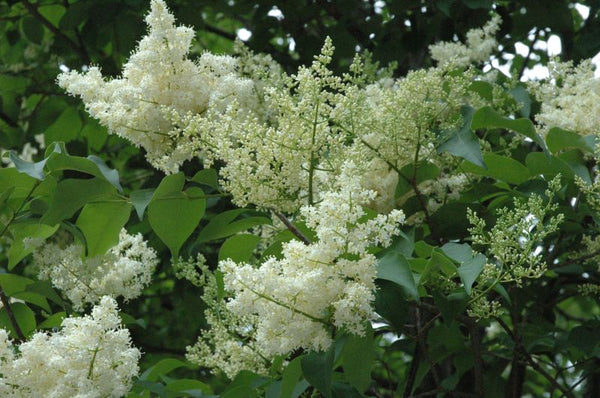Japanese lilac, (Syringa reticulata)
Shipping calculated at checkout
Out of stock
Need more? Contact us
Lilacs include 30 species of deciduous shrubs and shrubs belonging to the olive family. Native to southeastern Europe and eastern Asia, none are native to North America. It was in the mountains of Japan that Syringa reticulata was discovered. In 1875, the Soviet botanist Maximowicz first described this species under the name Syringa amurense var. japonica. It was introduced to the United States in 1876 at the Arnold Arboretum in Boston.
This small tree or shrub can reach 10 m. It has very red and decorative bark, erect then spreading branches, dense and early foliage, flowering in large creamy white panicles. The foliage, dark green in summer, does not offer a very attractive color in fall. Its simple leaves are opposite, oval, deciduous, ample and acuminate, shiny green above, grayish below. Their underside may be slightly pubescent. The bisexual flowers are grouped in long, creamy-yellow panicles with a pleasant scent. Japanese lilacs bloom profusely from mid-June, about two weeks after other lilacs bloom. Plant it in full sun and with a clearance of 10 feet.



